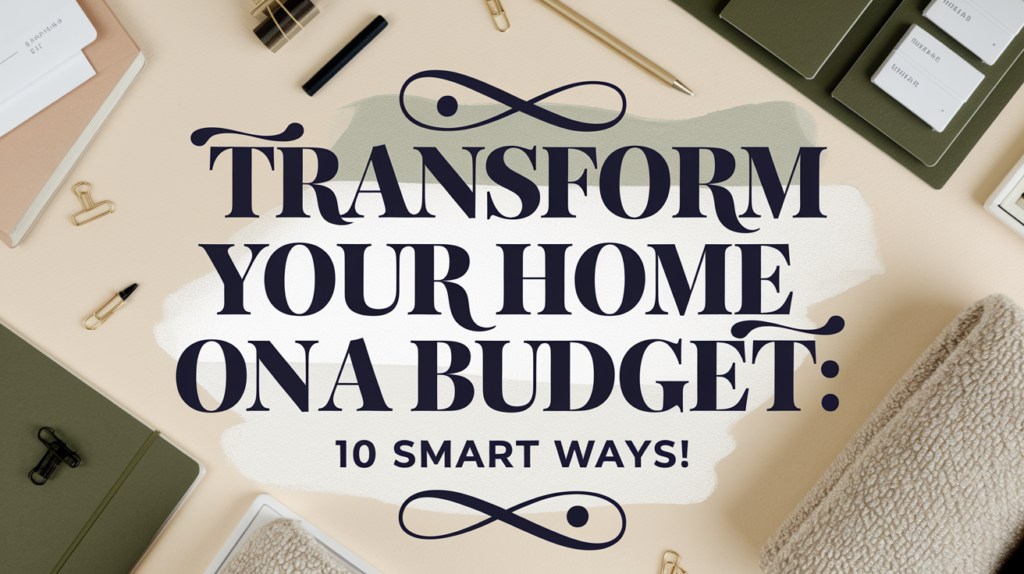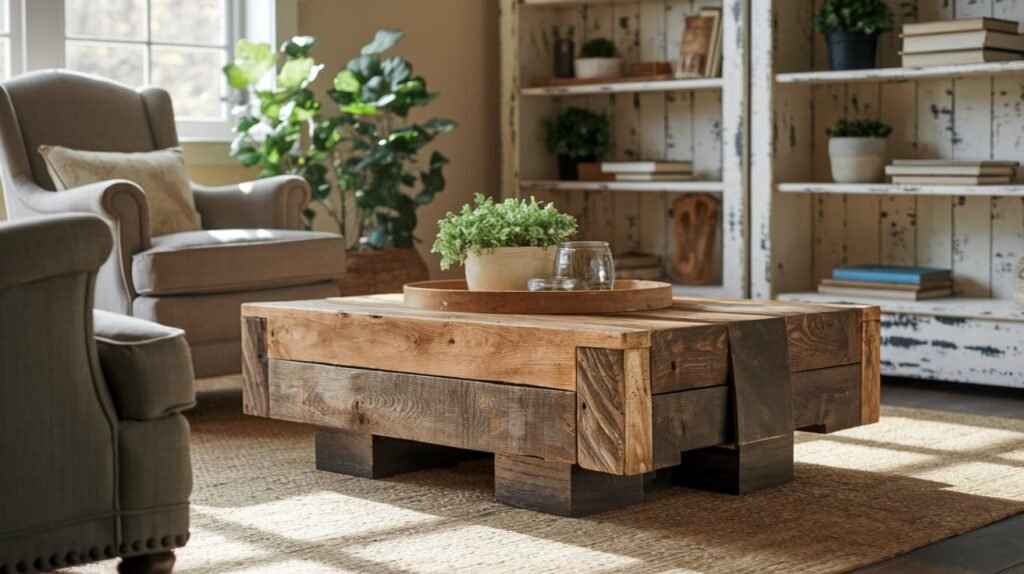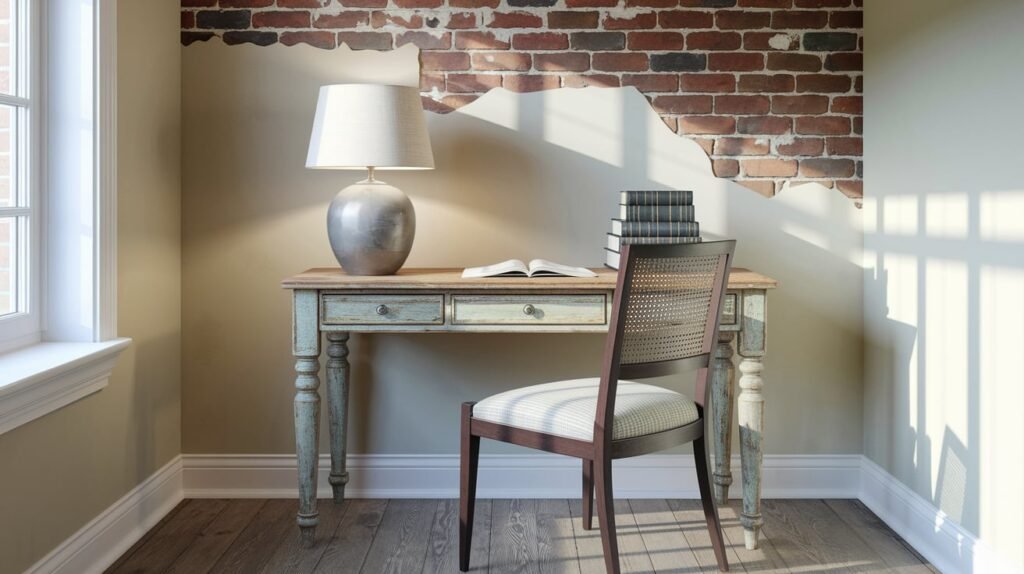
Design a Budget-Friendly Home Without Sacrificing Style
Creating a home that feels cozy, functional, and stylish doesn’t have to break the bank. With the right strategies, you can achieve a space that’s comfortable and budget-friendly without compromising on quality or style. Whether you’re setting up your first apartment or redesigning your current space, here’s a practical guide to help you create a budget-friendly home environment that suits your lifestyle and savings goals.
Step 1: Start with a Decluttered Space
Before you spend a dime, declutter your home. A clutter-free space not only feels more spacious but also helps you identify what you truly need. Sort through your belongings and donate, sell, or recycle items you no longer use. A minimalist approach can transform your home and save you money in the long run.
Tips for Decluttering:
Use affordable storage bins or repurpose old containers to organize small items.
Sell unused items online to earn extra cash for home improvements.
Step 2: Prioritize Functional Furniture
When shopping for furniture, focus on functionality over trends. Multifunctional pieces, like a foldable dining table or a sofa bed, can save space and money. Look for durable, timeless designs that will last for years.
Pro Tip: Check out thrift stores, Facebook Marketplace, or Craigslist for gently used furniture. With a little creativity, you can transform second-hand finds into stylish, budget-friendly pieces.
Step 3: DIY Home Décor
DIY projects are a fantastic way to personalize your home without overspending. From wall art to upcycled furniture, there are endless possibilities for creating custom decor on a budget.
DIY Ideas to Try:
Paint old furniture to give it a fresh, modern look.
Turn mason jars or wooden crates into chic storage solutions.
Create your own wall art using inexpensive canvases and paint.

Step 4: Maximize Natural Light
Natural light can make your home feel brighter, bigger, and more inviting. Avoid heavy curtains and opt for sheer fabrics or blinds to let sunlight flood your space.
Pro Tip: Place mirrors strategically to reflect light and make rooms appear larger.
Step 5: Focus on Small, Affordable Details
Sometimes, the smallest changes make the biggest impact. Add warmth and personality to your home with budget-friendly accents like throw pillows, rugs, and candles.
Inexpensive Ways to Enhance Your Space:
Incorporate indoor plants for a touch of greenery and freshness.
Stick to neutral colors for larger items to keep your decor timeless and versatile.
Layer textures (think cozy blankets and woven baskets) to add depth to your rooms.
Step 6: Embrace Second-Hand Shopping
Second-hand shopping is a goldmine for budget-conscious homeowners. Thrift stores, garage sales, and online marketplaces offer high-quality furniture and decor at a fraction of the cost.
Pro Tip: Be patient and keep an eye out for hidden gems. A little paint or new upholstery can breathe new life into second-hand finds.

Step 7: Tackle DIY Home Maintenance
Save money on professional services by handling simple home maintenance tasks yourself. From painting walls to fixing leaky faucets, DIY repairs can significantly reduce your expenses.
Common DIY Tasks:
Repaint walls to refresh your space.
Seal windows and doors to improve energy efficiency.
Repair small furniture and appliances instead of replacing them.
Step 8: Organize Your Kitchen for Budget-Friendly Meal Prep
Cut down on food costs by organizing your kitchen and planning meals in advance. A well-organized kitchen encourages cooking at home, saving you money on takeout.
Tips for Saving in the Kitchen:
Plan weekly meals and create a shopping list to avoid impulse buys.
Cook in bulk and freeze leftovers for quick, affordable meals.
Shop in bulk for non-perishable items to save money over time.

Step 9: Create a Cozy Atmosphere on a Budget
A cozy home doesn’t require expensive upgrades. Focus on comfort with soft blankets, warm lighting, and calming scents. Personal touches like family photos or handmade decor can also make your space feel more inviting.
Affordable Cozy Touches:
Use string lights or candles for warm, ambient lighting.
Add a few houseplants to bring life and freshness to your rooms.
Keep your space tidy and clutter-free for a calming vibe.
Step 10: Set and Stick to a Home Budget
Finally, create a home budget and track your spending. Knowing your limits will help you avoid overspending and ensure your home improvements align with your financial goals.
Budgeting Tips:
Use a spreadsheet or budgeting planners to track home-related expenses.
Prioritize needs over wants and avoid impulsive purchases.
Regularly review your budget and make adjustments as needed.
Final Thoughts
Creating a budget-friendly home is all about being resourceful, creative, and intentional with your choices. From decluttering and DIY projects to second-hand shopping and smart budgeting, there are countless ways to design a stylish, comfortable home without breaking the bank.
By following these tips, you’ll not only save money but also create a space that reflects your personality and lifestyle. Start small, work with what you have, and gradually build a home that’s both frugal and fabulous.